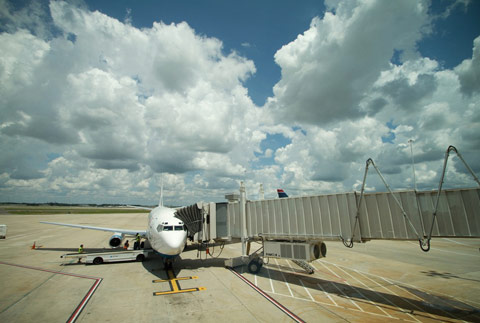
Even though you are legally allowed to take your guitar as a carry on in flight when flying with a guitar, traveling with your guitar can still be a stressful process. The most dreaded thing for musicians is being asked to check it with the rest of the baggage, and your whole flight can be spent worrying about the safety of your instrument. To minimize the stress associated with flying with a guitar, here are 5 tips that can help you fly in peace with your acoustic guitar:
1. Check with the Airline Instrument Policy
You can save yourself a lot of anxiety if you would check with the airline before booking your ticket. Some airlines are more friendly and sympathetic towards musicians and don’t cause too much hassle, while some others may make the process more difficult. Try flying with an airline that will welcome your guitar as a carry on and in any case, call ahead to make sure to avoid any inconvenience when flying on smaller regional aircraft where in-cabin room is less available than on larger aircraft.
2. Loosen the Strings
A day before your flight, make sure you have prepared your guitar for travel. It is important to ensure that your instrument is protected and not exposed to any unnecessary damage. We recommend loosening the strings. Temperature and pressure changes in the cabin or luggage compartment can cause damage to the neck of your guitar. To make sure it stays protected against these changes, its always wise to have a humidifier in the case.
While putting it in the case, also make sure it rests tightly so there's no room for bumps and damages. Put towels or shirts in the empty space and make sure there are no sharp tools floating around in your case.
3. Invest In a Guitar Case
A sturdy guitar case helps protect your guitar from potential damage and allows you to travel without feeling worried about your precious instrument. There are many high quality options to choose from, and we offer a variety within our online store. However, case choices come with some questions such as the material you should buy or whether to invest in a gig bag or a hard case. It can be easier to find space for your instrument or guitar if it is in a gig bag, because its smaller and more compact, but this will not offer as much protection as a hard case.
4. Consider a Smaller Body Shape for Traveling
While not everyone is able to purchase an instrument specifically for traveling, if you find yourself on the road quite often and are looking for a more convenient traveling option, smaller bodied instruments like our parlor guitars or even concert shapes are much easier to travel with than larger body shapes like a jumbo or auditorium body shape.
5. Book Your Seat in the Front or Rear Depending on Boarding Policy
This is a smart tip and one which allows you to avoid all potential excuses of flight attendants. By booking your seat in the front or rear, depending on boarding practice per airline, you will be called to board the plane first, which allows you to put your guitar in the overhead cabin and avoid worrying about the space later on.
6. Know the Laws
SEC. 403. MUSICAL INSTRUMENTS.
(a) IN GENERAL—Subchapter I of chapter 417 is amended by adding at the end the following:
‘‘§ 41724. Musical instruments
‘‘(a) IN GENERAL—
‘‘(1) SMALL INSTRUMENTS AS CARRY-ON BAGGAGE.—An air carrier providing air transportation shall permit a passenger to carry a violin, guitar, or other musical instrument in the aircraft cabin, without charging the passenger a fee in addition to any standard fee that carrier may require for comparable carry-on baggage, if—
‘‘(A) the instrument can be stowed safely in a suitable baggage compartment in the aircraft cabin or under a passenger seat, in accordance with the requirements for carriage of carry-on baggage or cargo established by the Administrator; and
‘‘(B) there is space for such stowage at the time the passenger boards the aircraft.
For instruments too large to fit in an overhead or under your seat, you can bring them aboard but you do have to buy another ticket:
‘‘(2) LARGER INSTRUMENTS AS CARRY-ON BAGGAGE.—An air carrier providing air transportation shall permit a passenger to carry a musical instrument that is too large to meet the requirements of paragraph (1) in the aircraft cabin, without charging the passenger a fee in addition to the cost of the additional ticket described in subparagraph (E), if—
‘‘(A) the instrument is contained in a case or covered so as to avoid injury to other passengers;
‘‘(B) the weight of the instrument, including the case or covering, does not exceed 165 pounds or the applicable weight restrictions for the aircraft;
‘‘(C) the instrument can be stowed in accordance with the requirements for carriage of carry-on baggage or cargo established by the Administrator;
‘‘(D) neither the instrument nor the case contains any object not otherwise permitted to be carried in an aircraft cabin because of a law or regulation of the United States; and
‘‘(E) the passenger wishing to carry the instrument in the aircraft cabin has purchased an additional seat to accommodate the instrument.
